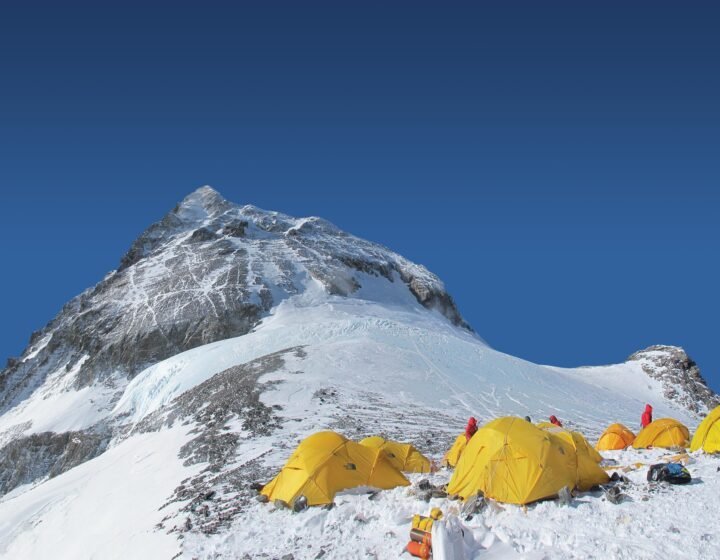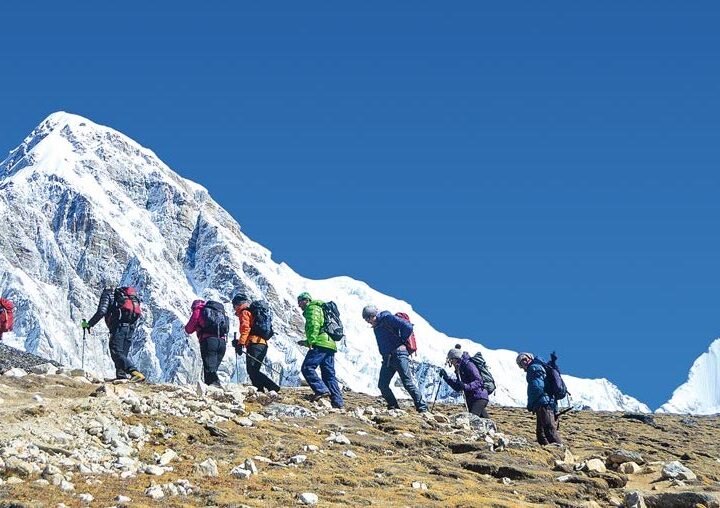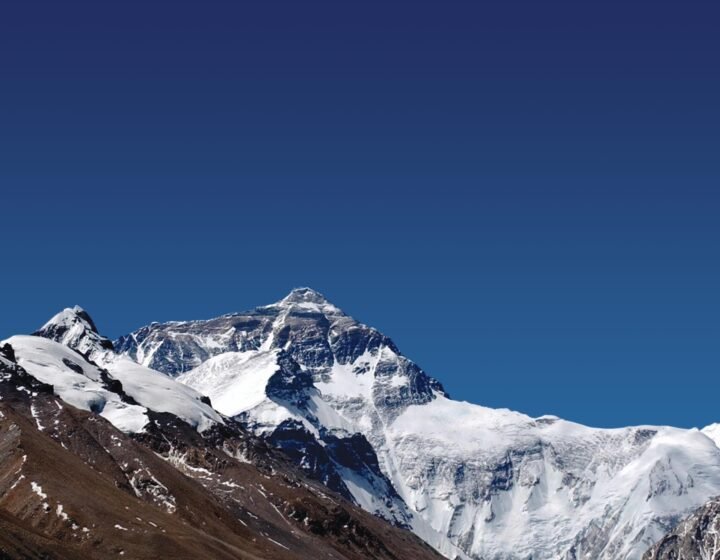- Details
Detailed itinerary
Itinerary- Tour Includes/Excludes
- Useful Info
- Trip Map
- FAQ
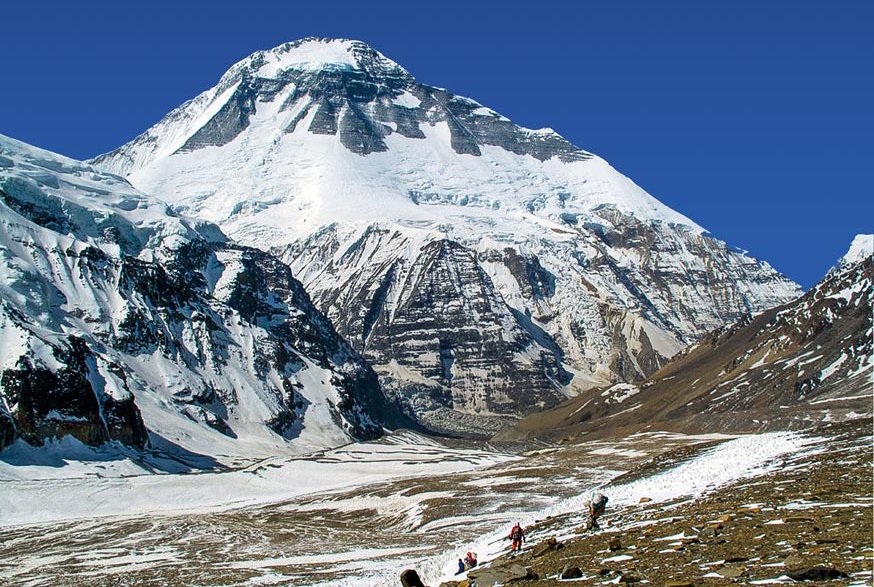
Trip overview
The Dhaulagiri Circuit Trek is one of Nepal’s most demanding treks and requires previous experience in high-altitude trekking. A rope, ice ax, and crampons are usually required and you might need to wear a helmet as some stretches of path are susceptible to small rockfalls.
The Dhaulagiri Trek is an extraordinary trek in Nepal with the finest views and challenging climbs. In the mountains of Nepal, the Dhaulagiri Trek is said to be one of the toughest 3-week treks where you need a minimum of 13 days of trekking, excluding an acclimatization day. Therefore, most of the Dhaulagiri trek packages are designed to be 20-day long and at the same time, the trail to the Dhaulagiri mountains offers different non-technical climbing options, such as Dhampus Peak, with a height of 6,060m. Dhaulagiri is the 7th highest mountain in the world with the highest summit of 26.795 feet. That fact, all trekkers must be aware of physical fitness and other challenges that arose during the trail.
Although the trekking journey started from Kathmandu, the real mountain experiences started from Pokhara and Beni. The scenery of the Kali Gandaki River and authentic Gurung valley towards the Italian Base Camp, along the way. After an hour of a trek to Dhaulagiri Base Camp, we start our walk toward the peak at French Pass. The trial lets you encounter the hidden valley. The exit point is at Dhampus Pass (5234m) and back to Pokhara via Jomsom.
Highlights:
- The world’s 7th highest mountain, with spectacular scenery.
- A massif view of Mt. Dhaulagiri, the Annapurna Range, Machhapuchhre, and others.
- Visit the world’s deepest gorge at the Kali Gandaki River.
- Cross two major passes: the Dhampus (5,240m) and the French (5,360m).
- Enjoy the Dhaulagiri High Passes Trek, the most fabulous trek as it covers 15 magnificent peaks over 7,000m in height.
- Closer encounters with a broader range of landscapes, cultures, ethnic diversity, off-the-beaten-path trails, uninhabited settlements, flora, and fauna (abundant alpine flowers)
- The Dhaulagiri Circuit Trip is a rewarding trekking tour for adventure lovers.
Itinerary
Day 01: Arrival in Kathmandu and Overnight at a hotel.Arrival at the international airport of Nepal and after 20 minutes of drive you will reach to the hotel where you will get your room keys. That night you will enjoy Nepalese traditional food and a cultural program organized by the hotel.
After sightseeing the cultural heritage of Kathmandu valley in the daytime you got some time to buy your trekking stuff in the Thamel market.
Take a drive to Beni by Prithivi Highway, throughout the trial you will enjoy the massif beauty of mountain Machhapuchhre, From Beni, you will enter the Dhaulagiri region, the route is followed by Myagdi Khola and a lovely hamlet during the trip. It takes 3 hours from Pokhara.
You drive to Babbiachor via Beni after breakfast. The drive should take 10-11 hours, and you'll love most of the sights. Beni is the district headquarters and contains a police checkpoint where you can have your trekking permits checked.
Continued effort After passing the bridge beyond the settlement to the south bank of the river, the trail makes a small half-circle before crossing another bridge near the village of Simalchour, and finally arriving at Babichor after a long bus ride.
On both sides of the river, the valley widens and terraced hills form. The trail is generally level, passing through Shahashradhara, across the Duk Khola, and walking through farms to Ratorunga. The valley narrows again from here, and terraces on either side of the river disappear. Continue to Dharapani village. Overnight stay at a tented camp.
As you leave Phedi, the trail begins to climb in earnest after crossing the river to its West Bank, with many switchbacks until you reach the crest and the angle of ascent eases. The trail climbs sharply once more to the Muri settlements. Continue your journey towards Sibang and Mattim.
Continue up an inclination to the ridge's snout, then descend to the Gatti Khola and Phalai Gaon (1810meters). Cross the Dhara Khola to resurface on the west bank of the Myagdi Khola, then climb a ridge to Muri, a big Magar settlement. Overnight stay at a tented camp.
Descend a little, cross a brook, and continue through terraced fields before climbing a ridge to the pass from where Mt. Ghustung South may be seen (6465 meters). Descend to the Myagdi Khola and trek along its West Bank to the settlement of Naura, from whence you will climb briefly before traversing a grassy hill and climbing a steep incline with switchbacks, before descending through a forest and terraced farms to Boghara (2080meters) Overnight stay at a tented camp.
The path descends through terraced fields to a tiny ridge, then through a woodland to Jyardan, the most remote permanent hamlet in this section.
Following the town, a high curving trail through a steep area before descending and climbing again to Lipshe, where there is only one cabin. The path continues through the woodland to Lapche Kharka before ascending to the flat area of Dobang. Overnight stay at a tented camp.
The trail ascends a forested area after crossing a wooden bridge out of Dobang. Through gaps in the woods, the west face of Dhaulagiri I (8167 meters) becomes visible.
Descend to the Myagdi Khola and cross to the east side on a wooden bridge before continuing to Chartare. After passing through more forests, you cut across a rocky terrain and cross a stream to reach Choriban Khola. Overnight stay at a tented camp.
Follow a trail to the Chhonbarban Glacier's terminal moraine and enter the glacier from the right. Straight ahead, Tukche Peak (6837 meters) appears at the far end, while the majestic north flank of Dhaulagiri I (8167 meters) dominates the skyline to your right.
After a short distance, you will arrive at Italian Base Camp (3660 meters), which will also serve as your overnight camp. The peaks of Dhaulagiri II (7751 meters), Dhaulagiri III (7715 meters), and Dhaulagiri V are to the west (7618 meters). Overnight stay at a tented camp.
We will stay here for a day to acclimate and adjust to the thinner air. It is advised that your body acclimates to the high altitude and becomes "tuned" for even higher elevations to come. Overnight stay at a tented camp.
Set up early in the morning when the weather forecast calls for clear skies. This trail, which travels through a tight gorge, is prone to stone fall. We'll spend the night near the glacier today. Overnight stay at a tented camp.
This is one of our exciting trips to Dhaulagiri base camp. You may see the spectacular north face of Dhaulagiri I (8167 meters) dominating the skyline to your right from here.
The peaks of Dhaulagiri II (7751 meters), Dhaulagiri III (7715 meters), and Dhaulagiri V are seen to the west (7618 meters). The magnificent icefall that descends from the northeast col is in front of you. Overnight stay at a tented camp.
Another rest day, but this one is critical for acclimatization. The views from here are spectacular, and there is enough to discover. Overnight stay at a tented camp.
Following the glacier, you climb two terraced hills, the first of which goes along the glacier and then cuts through the mountain face and moraine before entering a mild ascent on the left from an ablation valley. Climb this modest incline to reach the French Pass (5360 meters). From the French Pass, you can see Mukut Himal (6328 meters), Tashi Kang (6386 meters), and Sita Chuchura (6611 meters), all of which encircle the Hidden Valley. Tukche Peak (6920 meters) is to the south, while Dhaulagiri I lies beyond.
Continue along the right border of the Hidden Valley, lowering altitude, until Thapa Pass (5250 meters) between Tukche Peak and Thapa Peak (6,012 meters). After descending from Thapa Pass, you will arrive at camp at 5200 meters. Overnight stay at a tented camp.
Descend from the hidden valley to Dhampus Pass, then to Yak Kharka. There is an ideal camping spot to enjoy the surroundings. Overnight stay at a tented camp.
Descend to the settlement of Marpha on the Kali Gandaki River's west bank. Marpha is home to many apple orchids as well as a variety of fruit-based foods. Apple Brandy is a regional specialty that you may be able to sample en way. Continue north, along the river valley, reaching Jomsom. Overnight stay at a tented camp.
Today's flight from Jomsom to Pokhara takes 25 minutes. We drove to the hotel after arriving at Pokhara airport. The rest of the day will be spent relaxing. If you're interested, you can take a sightseeing tour of the Pokhara valley. Overnight in Pokhara at a hotel.
We board a tourist bus for Kathmandu around 7.30 a.m. We return to Kathmandu at 2-3.00 pm. In Kathmandu, spend the night.
After the journey, our airport representative will transport you off at Kathmandu International Airport for your flight out of Nepal.
Included
- Private vehicle-based airport pickup and drop-off in Kathmandu.
- The welcome and farewell dinners include the cultural programs noted in the schedule.
- B/B hotel accommodations in Pokhara and Kathmandu that meet tourist standards.
- As specified in the program, a half-day guided city tour with a world heritage admission pass.
- Private transportation to and from the trek's beginning and end locations.
- A flight from Jomsom to Pokhara that includes airport tax.
- Twin-sharing lodging in a standard lodge or guest house during the journey, if available.
- Three meals per day of full board service while on the hike.
- Fees for the Trekker's Information Management System (TIMS) card and the trekking permit
- A certified local trekking guide who holds a government license.
- All costs incurred by the staff (guides and porters), including food, lodging, wages, insurance, and equipment throughout your trip.
- All of the necessary hiking equipment for porters, including a jacket and pants, hiking boots, gloves, shocks, and sunglasses.
- The sleeping bag, down jacket, walking poles, and duffel bag
- A complete first-aid kit.
- Promptly set up every rescue and evacuation in Worst Condition
- Gear for group treks.
- Trekking Map,
Not Included
- Any pre-packaged meals or snacks, aerated drinks, energy drinks, mineral water, alcohol, cigarettes, chocolates, or nutria bars.
- All desserts, such as pudding, cake, pie, and chocolate.
- Personal things, laundry expenses, and gratuities
- Clothes, packing supplies, a personal medical kit, and trekking gear.
- Any other personnel not specifically named.
- Medical and travel insurance, as well as emergency transportation, including helicopter evacuation if necessary.
- Expenses for rescue, repatriation, medications, medical tests, and hospitalization.
- The cost of overseas airfare.
- The admission fee to Nepal (Visa issuance is easy at arrival).
- In the tea houses, a hot shower and battery charging.
Useful Info
- All foreign travelers must share their personal (visas and passport) details while booking and arriving.
- Bring warm clothes with a zip layer style which will allow you ease in maintaining the temperature while trekking
- Carry only biodegradable items to keep mountains clean
- Advice to keep a buffer day to handle the uncertain event
- Recommended to keep cash in case ATMs are not available.
- It is a must for all tourists to keep their passports or visa with travel firms.
- Recommend hydrating their body during the trial and keeping extra water bottles with them.
- The mobiles and camera batteries have high chances of getting dead or losing charges quickly therefore the portable charger is a must for your electronic
Trip Map
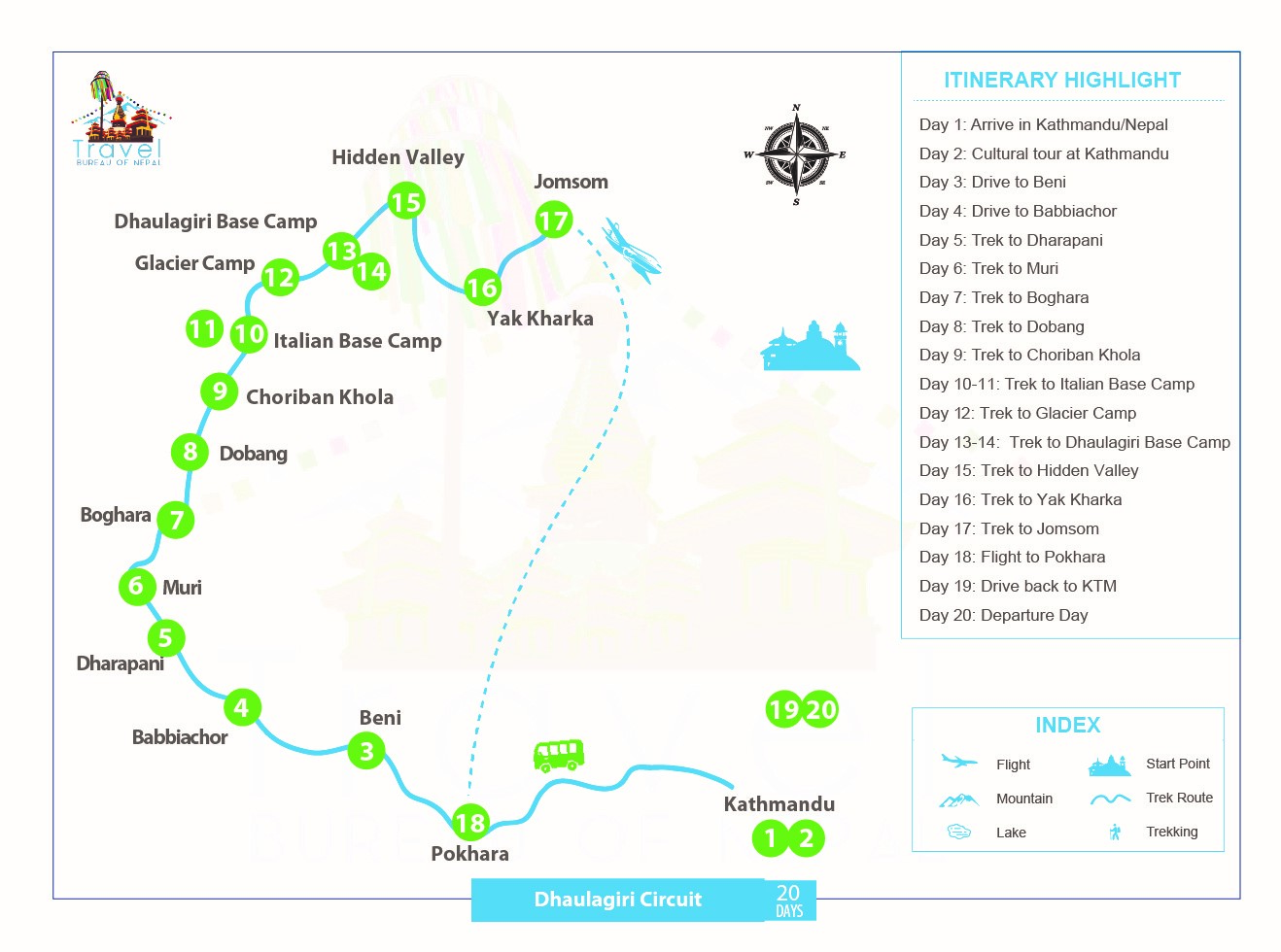
FAQs
-
When is the ideal time of year to hike the Dhaulagiri Circuit?
When is the ideal time of year to hike the Dhaulagiri Circuit? The trek is best done in the autumn (September - November) and spring (May - April). The weather is mild during this season, and the vistas are spectacular. In March, there is a lot of ice, making high-altitude passages impossible. We recommend that you do not go if the weather is adverse after French Pass.
-
How difficult is the Dhaulagiri trek?
How difficult is the Dhaulagiri trek? In Nepal, the Dhaulagiri trek is regarded as a difficult high-altitude trek. Trekkers must cross 5,000m+ high passes and hike for several days over the lonely and harsher terrain. The hike could be complicated by altitude. Slowly walk to obtain complete acclimatization. Above the Italian Base Camp, tourism infrastructure is nearly non-existent, implying that you must camp. The trail is frequently covered with snow, making it difficult to find the correct trail. Furthermore, there are no water sources in some areas, and the water that is accessible is not safe to drink. We recommend that you bring plenty of water and a water purifier.
-
What is the Dhaulagiri Circuit Trek's accommodation like?
What kind of accommodations are available on the Dhaulagiri Circuit Trek? The Round Dhaulagiri Excursion is a teahouse and camping trek. If a teahouse is available, we stay there, otherwise we camp. The teahouse provides modest services, but the rooms are clean and the beds are comfy enough for a good night's sleep. As camping begins, we will sleep inside the tent on sleeping bags carried by porters.
-
Is it possible to climb Dhaulagiri on your own?
Is it possible to climb Dhaulagiri on your own? The short answer is yes. But only if you're an experienced hiker. According to the article, the perilous Dhaulagiri trek has claimed many lives. The guide must be extremely experienced; this is not for everyone. We recommend that you hire the best guide possible; why risk your life?

